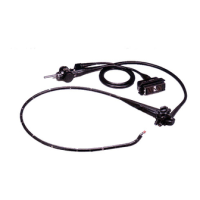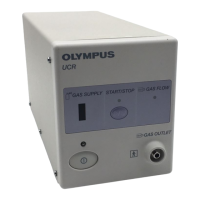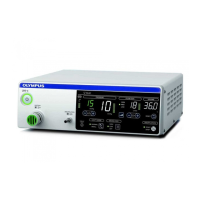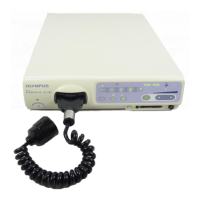• Before performing high-frequency cauterization, inspect the surface of the
endoscope for any dents, bulges, or other irregularities. Otherwise, patient injury,
burns, bleeding, perforation, and/or equipment damage may result.
• When performing high-frequency cauterization, do not use the electrosurgical unit’s
SPRAY coagulation mode. The endoscope may be damaged, and it can cause
patient and/or operator burns.
• Set the electrosurgical unit to the minimum necessary output level. If the output
level is too high, the endoscope’s and/or accessory’s insulation may be damaged
and cause operator and/or patient burns.
• Some Olympus endoscopes are equipped with a feedback circuit to lead leakage
current from the endoscope to the electrosurgical unit. However, the BF-190 series
endoscopes are not equipped with a feedback circuit, because leakage current
from the electrosurgical accessory to the endoscope is minimal as the insertion
tube is short. Therefore, the S-cord is unnecessary when using the BF-190 series
endoscopes.
• The application of high-frequency current may interfere with the endoscopic image.
This does not indicate a malfunction.
Prepare, inspect, and connect the electrosurgical unit and electrosurgical accessories
as described in their respective instruction manuals.
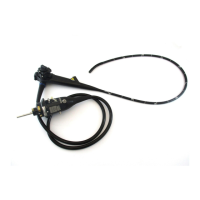
